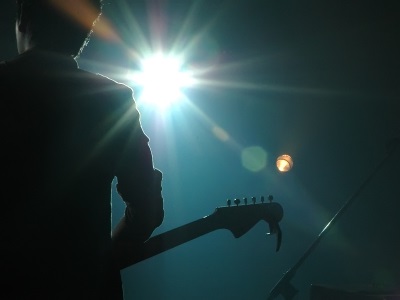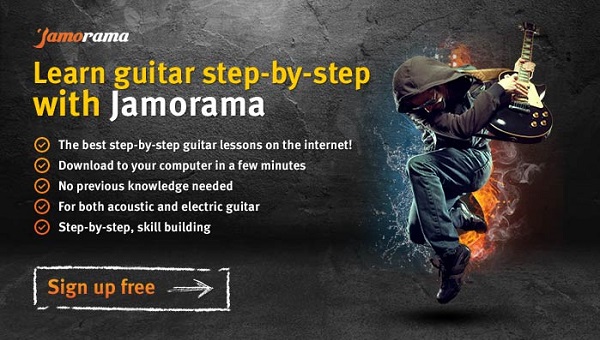Reggae Guitar Lessons
 Reggae is the epitome of relaxed and laid-back guitar playing. That being said, sleeping in and hanging your guitar on your wall as art won’t help you to learn it.
Reggae is the epitome of relaxed and laid-back guitar playing. That being said, sleeping in and hanging your guitar on your wall as art won’t help you to learn it.
Reggae is based on a few foundational elements, and the best thing is, you need only the most basic of musical knowledge to learn it.
The first and most common aspect of reggae guitar playing is the offbeat pattern. Reggae guitar has a unique strumming style, which employs muted strums on the offbeat, or the upbeat.
What Is The Offbeat?
The offbeat is the odd beat, the every-other beat. When you play a 4/4 piece with quarter notes, the offbeat is simply the second and fourth beat. That means that the first and third notes are the primary beat. That being said, every other note you play, every ‘and’ note, is the offbeat.
With reggae guitar, the offbeat is a simple and quick upwards strum performed with the strings muted. This isn’t a palm mute; un-fret your note or chord when performing the offbeat strum.
While you are un-fretting the notes, don’t feel the urge to play patty cake with your fretting hand; simply release the pressure, but keep your hand in the proper chord positioning. Simply put, fret the chord without actually fretting the chord.
Primary Guitar Barre Chords
Next up, you have to learn your primary guitar barre chords. Primary chords within a major key are built on the first scale degree known as the tonic, the third scale degree known as the mediant, and the fifth scale degree, known as the dominant.
Luckily, in a major scale, the primary chords are all major, so that makes them easy to remember. For instance, let’s take the C Major scale, as it is the most basic scale because it contains absolutely no sharps or flats, and let’s find our primary chords.
The C Major scale consists of the notes C, D, E, F, G, A, and B. The tonic of C Major, or the first note name, is C. The mediant of C Major, or the third note name, is E. Finally, our dominant, or our fifth note name, is G.
Pay Attention to The Fifth Note
This means that our C Major primary chord will be C Major, E Major, and G Major. If we were to simply build the triads of each chord, following the Major triad construction of a Major third followed by a minor third, we would come up with three separate chords.
For our tonic, the chord would consist of C as the root, E as the third, and G as the fifth. For our mediant, the chord would have E as the root, G as the third, and B as the fifth. Finally, our dominant would consist of G as the root, B as the third, and D as the fifth.
Notice that even though the chords are different, their notes are similar. This is why they are prime chords; they share the same primary notes with one another.
Now that you know the basics of how to play reggae guitar, the final step is in your hands; practice. Set aside a chunk of time each day to develop your technique. Good luck!
The Ultimate Guitar Learning Guide
Related Articles
Leave A Comment







One Comment
I’m in England I’m 56 yrs old, I have been playing guitar for approx 2 yrs now on and off. Reggae is my love, and that’s all I want to do. I can play redemption song, and strum, but other songs I know only use down stroke. I have arthritis is some fingers so can only Barr 3 top strings together no more as bend in finger. I need someone who can really help me learn to play reggae properly, but also would be prepared to take me through songs I want to learn. If you think you can do all this please drop me a email and we can arrange a date to start. Many thanks